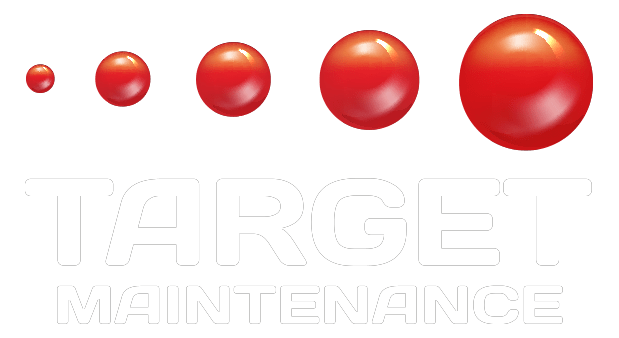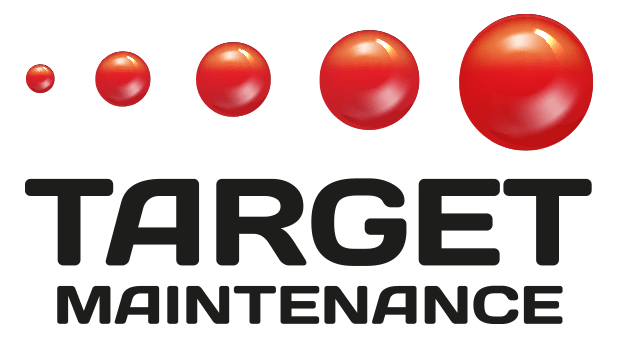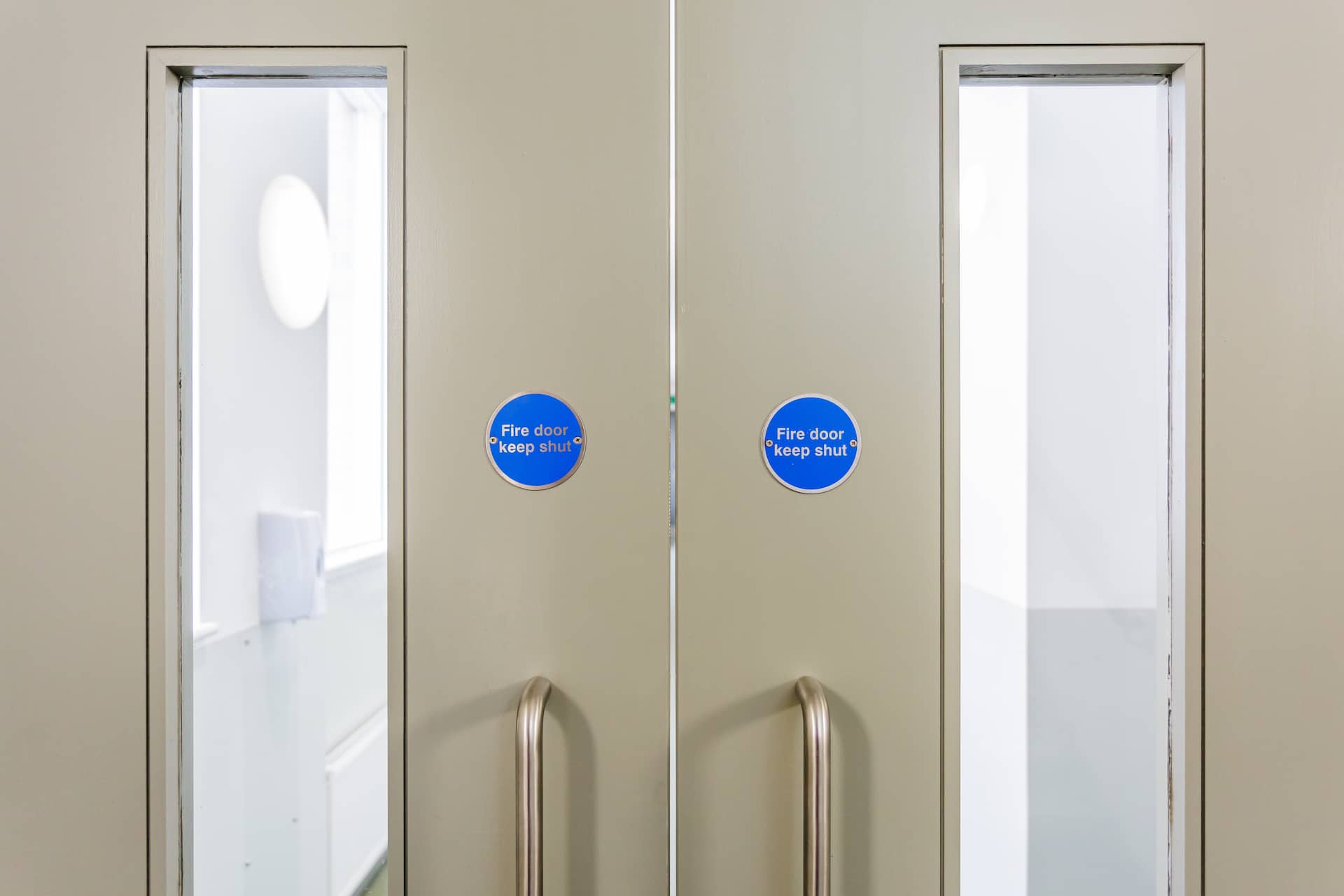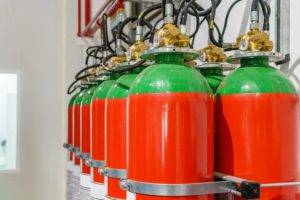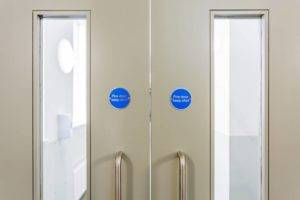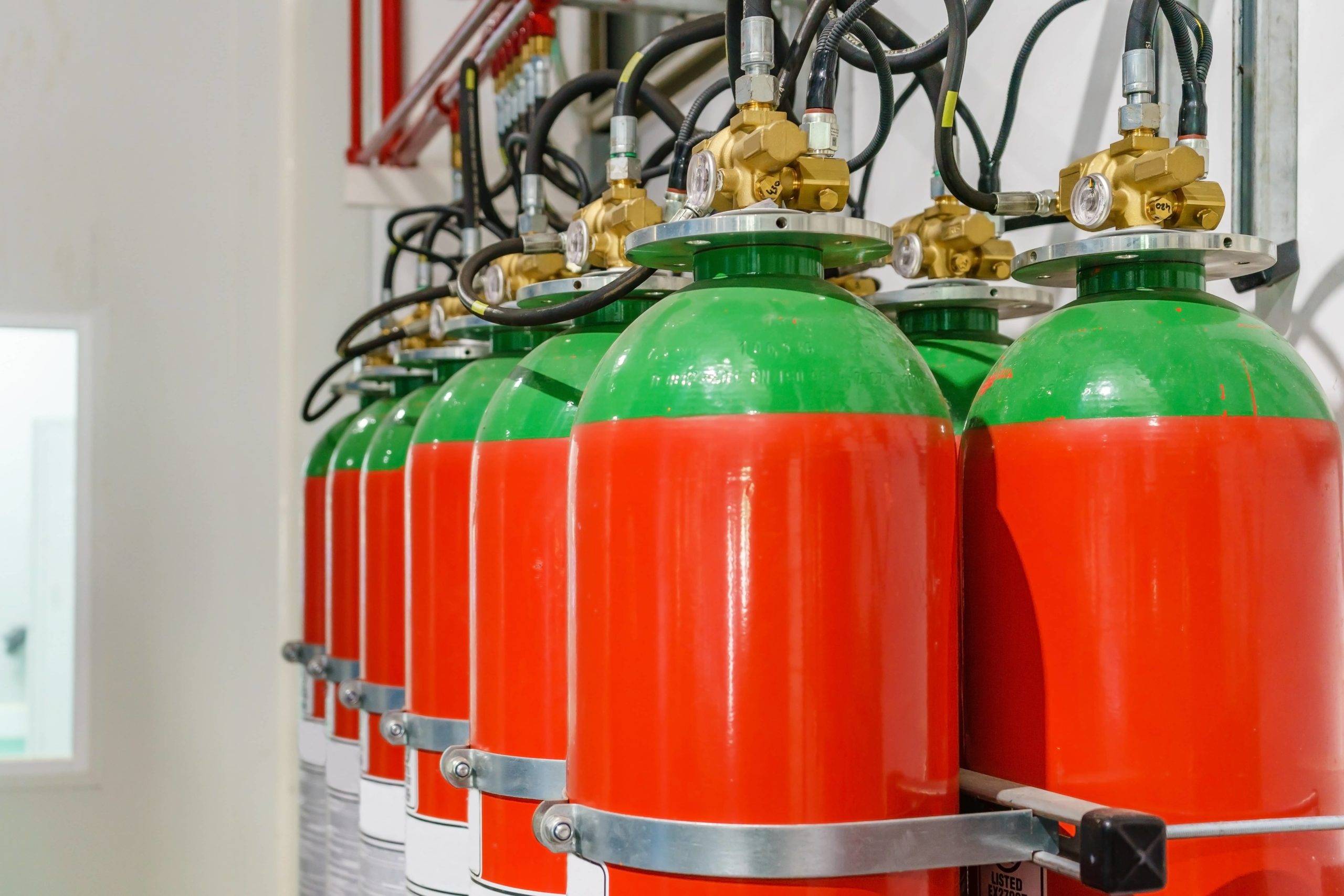You should carry out a fire door inspections every 6 months. This is to regularly ensure that it is functioning and ready for use. Any slight alteration can affect usability in the event of a fire. It’s important, like with any type of passive fire protection system, to perform periodic checks.
Why Regular Fire Door Inspections?
Regular use every day can result in slight alterations to the door. As a result, this can affect the performance of the door in the event of a fire. Getting regular inspections by an accredited individual will mean that any issues are identified early and can be fixed.
What Fire Door Inspections Will Assess
Certification
Firstly, checking that the CE certification mark is present, usually located on the top or side of the door itself. This shows the structure has been assessed by a third-party and has received accreditation. There are buildings that possess old models still. They aren’t up to standard anymore, so will need a complete check.
Handles
As handles are often the first thing to go, it’s important that they’re looked at. Door handles get a lot of use, but they are crucial to the unit working properly. Therefore, checking that they’re still fixed securely to the door and operating as they should in the event of an emergency is essential.
Hinges
Fire doors are heavy by design and over time the weight of the door can affect the doors fixings. So, checking the hinges are in good working order and that they aren’t damaged or worn is important.
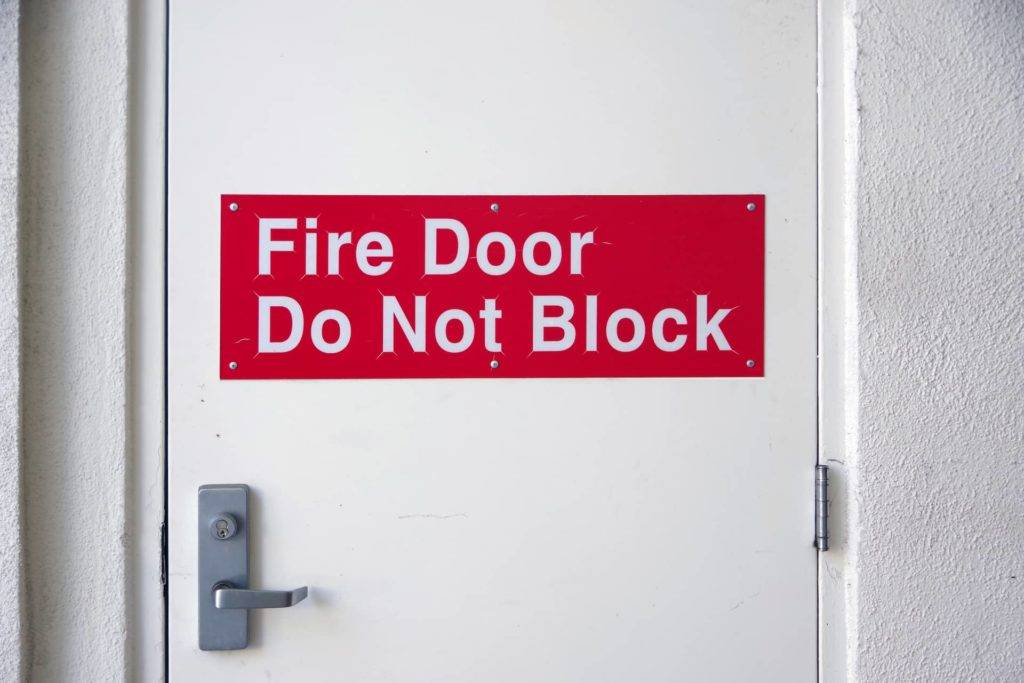
Exterior
Fire door inspections also looks at the wall and frame, how it sits and the original installation. An inspection will look for gaps, damage and cracks to the wall or frame. For instance, can you see daylight around the edges? These indicate gaps and they will need to be repaired, as gaps will allow smoke and fire to spread.
Closing Mechanism
By design, fire doors are meant to close by themselves. This helps to prevent the spread of smoke and fire by cutting off fresh oxygen. This mechanism needs to close the door completely and seamlessly, otherwise any gaps could allow fire and smoke to pass through.
Seals
Known as intumescent seals, these run around the edge of the door’s frame. When exposed to direct heat, in the case of a fire, the seal will expand. This is to close any potential gaps and help stop the spread of smoke and flames. These seals do not degrade with age in normal circumstances, but they can be damaged so should be checked every six months.
Contact Us For Fire Door Inspections
Looking for fire door inspections or do you have a concern you’d like to address? Contact Target Maintenance. Our team of accredited fire protection experts will ensure that your building is professionally assessed and tested to ensure fire safety standards are maintained.
